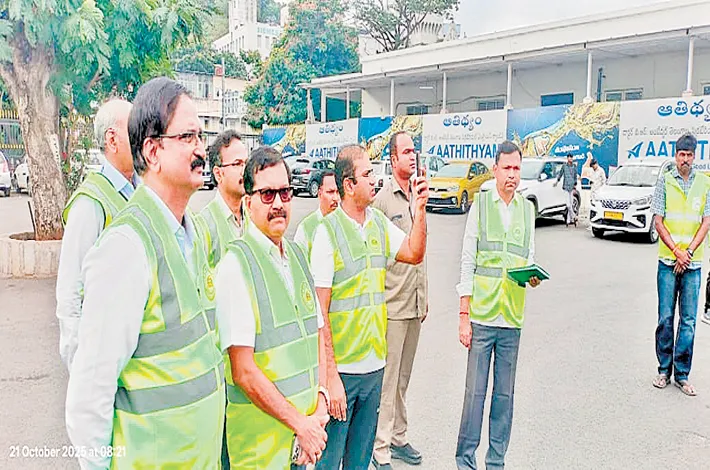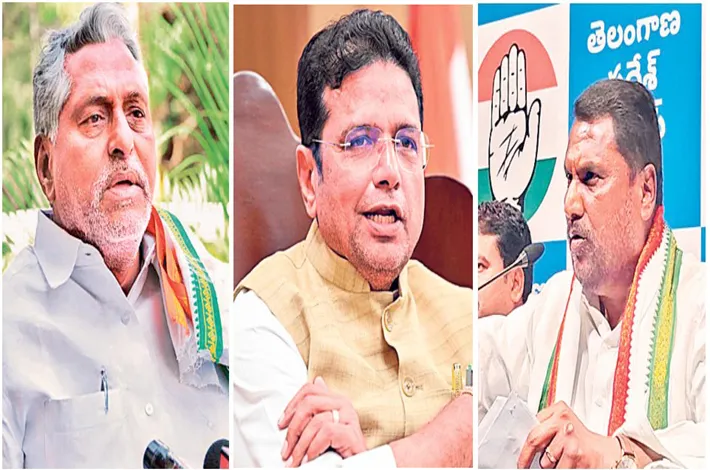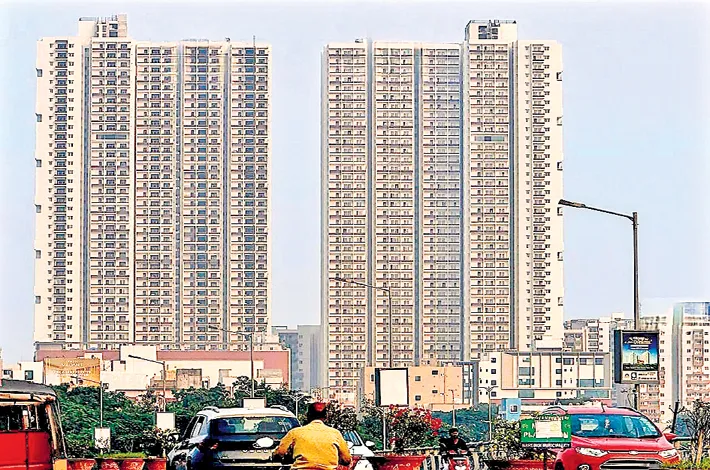From Red Corridor to Corporate Gold Rush
22-10-2025 12:00:00 AM

CL Rajam
In the dense, emerald heart of central India, where ancient Sal forests and tribal hamlets continue to exist, a 50-year rebellion is crumbling. Dandakaranya—the mythical wilderness of the Ramayana—has long been the cradle of India's Maoist insurgency. Once a bulwark against feudal landlords and state neglect, the Naxalite "Red Corridor" spanning 125 districts across 10 states is now yielding to the tricolor.
On October 15, The security forces neutralized the last major Maoist cadre in Gadchiroli, Maharashtra, marking what Prime Minister NarendraModi's government hails as a "historic victory" over left-wing extremism. Surrender ceremonies echo with promises of amnesty, jobs, and schools. But still as the gunfire fades, a new scramble unfolds: for land, minerals, and the trillions in untapped wealth beneath the canopy. Dandakaranya isn't just liberated—it's for sale.
The Maoist saga began in the late 1960s, a fiery response to the grinding poverty inflicted by country’s unequal agrarian order. In Naxalbari, West Bengal, sharecroppers rose against rapacious landlords, igniting a pan-Indian revolt that spread to the tribal belts of Chhattisgarh, Odisha, Jharkhand, and beyond. For decades, the guerrillas of the Communist Party of India (Maoist) positioned themselves as forest guardians. They sabotaged mining operations, blockaded highways, and enforced a de facto moratorium on commercial exploitation.
Bastions like Dantewada and Sukma became no-go zones for bulldozers and drill rigs, preserving vast swathes of biodiversity-rich terrain. Ecologists quietly credit the insurgents with shielding India's mineral El Dorado: iron ore deposits in Bailadila that could fuel a nation's steel mills, diamond fields in Madhya Pradesh rivaling South Africa's, coal seams in Jharkhand blacker than midnight, bauxite hills in Odisha laced with aluminum potential, and rare earth elements in Andhra Pradesh vital for the global tech boom. Unofficial estimates peg the Red Corridor's subsurface bounty at over $10 trillion Dollars—enough, some whisper, to bankroll India's federal budget for a quarter-century if Gadchiroli's riches alone are tallied.
But heroism soured into horror. The movement, warped by ideological zeal and internal purges, turned its rifles on the very Adivasis it claimed to liberate. Tribal villages endured kangaroo courts, extortion rackets, and crossfire killings. Development stalled: no roads pierced the jungle, no clinics dotted the clearings, no schools pierced the illiteracy fog. Freedom became a cruel irony—children press-ganged as couriers, women widowed by ambushes, elders starved of rations. By 2025, the human toll exceeded 15,000 lives, per government tallies, with Maoist ranks dwindling from 10,000 fighters in 2010 to under 500 today, battered by drone strikes, elite commando raids, and a web of informants incentivized by cash bounties.
Enter the BJP's iron fist, cloaked in velvet incentives. Since 2014, Operation Prahar and the Greyhounds have dismantled the insurgency's command structure, backed by $2 billion in counter-terror funding. Surrenders spiked 40% this year, with ex-cadres like 45-year-old LaxmanHemla from Bastar trading AK-47s for vocational training certificates. "We fought for the poor," Hemla told reporters last week, his tattooed arms now idle.
"Now, I want my children to study, not hide." The corridor's 90 million residents—mostly Scheduled Tribes—stand to gain: 5G towers sprouting in Sukma, polytechnics in Koraput, irrigation canals threading Bijapur's parched fields. Health outposts promise to halve maternal mortality; skill hubs aim to plug youth into the gig economy. It's a democratic dividend long denied, a BJP triumph scripted for the 2029 polls. Home Minister Amit Shah tweeted: "Red turns saffron—Viksit Bharat for every last village."
But yet, victory's gleam masks a voracious underbelly. As CRPF checkpoints replace Maoist checkpoints, the floodgates have creaked open—not to equity, but to empire-building. Real estate behemoths from Gujarat and Maharashtra, flush with Adani and Ambani echoes, are snapping up acreage at fire-sale prices. In Chhattisgarh's Surguja, a Mumbai-based consortium acquired 50,000 hectares last month for "eco-tourism townships," per land registry filings. Mining majors trail like hyenas: Vedanta's iron ore bids in Chhattisgarh, JSW Steel's coal auctions in Jharkhand, De Beers scouts in Panna.
Gadchiroli'ssurmai hills, once patrolled by red sentinels, now hum with prospectors' chatter. "This land could eclipse Australia's Pilbara," gushed a Rio Tinto executive at a Delhi investor summit. Infrastructure will explode: the Delhi-Mumbai Industrial Corridor snaking eastward, high-speed rail bisecting forests, airports at Jagdalpur, helipads for tycoon helitours. Rivers like the Indravati will be dammed for hydropower; cement kilns will belch smoke over teak groves. By 2030, projections from NITI Aayog forecast a $500 billion GDP jolt from the corridor—hotels for the elite, factories for the few.
The peril lies in the plunder. India's crony capitalism, critics charge, will feast unchecked. Tenders, ostensibly competitive, will funnel to cartels: a nominal bid here for "strategic minerals," a no-bid allotment there for "factory feedstock." Remember the 2G scam or coal-gate? This dwarfs them. Top houses—Reliance, Tata, Adani—will balloon their balance sheets; share prices will rocket, vaulting Indian billionaires past Elon Musk's throne. But the windfall won't trickle. Instead, it will torrent abroad: shell companies in Dubai's free zones, trusts in Singapore's vaults, hawala trails to Swiss bunkers. The Panama Papers already exposed such siphons; now, with $ trillions at stake, the drain will be biblical. Politicos and babus, entwined in the nexus, will pocket kickbacks 10% here, 30% there while opposition MPs, vigilance commissions, and a muzzled media look away, greased by patronage or fear.
Echoes of empire resound. The British Raj stripped Bengal's looms and Bihar's mines, erecting London spires with Kolkata's silver. Mughal satraps melted temple idols for Agra's Taj. Today, it's self-inflicted: Dandakaranya's diamonds crowning Dubai towers, its bauxite forging Singapore skyscrapers. Institutions—ED, CBI, green benches—will feign fury but fold for favors. NGOs, once vocal, will be co-opted or crushed under FCRA clamps. Mother India, looted by her sons.
Worse, nature revolts. Clear-felling for freight corridors will unleash monsoons askew, dust bowls in deciduous belts, tsunamis from silted bays. Rare earth digs poison the Phuljhari River; coal pits spawn acid rains. Rescue ops post-floods? Nominated cronies, not tenders—another skim. Climate calculus: India's Paris pledges evaporate as emissions spike 20% from corridor ops, per IPCC models.
Hope flickers, faint as fireflies in the sal shade. The government could pivot: transparent e-auctions for mines, 60% of forests gazetted as tiger reserves under Project Tiger 2.0, royalties ring-fenced for Adivasi cooperatives—schools funded by iron levies, clinics by coal cess. Extra quotas for tribals in PSUs, eco-tourism stakes for villages. Precedents exist: Bhutan's green hydropower, Costa Rica's debt-for-nature swaps.
If not? Gen-Z, forged in Fridays for Future and farm-law fires, must rise. Armed not with rifles but apps, audits, and alliances, they could firewall the forest—crowdsourcing tender scrutiny, blockchain-tracking ore trails, global shaming of launderers. Dandakaranya's dawn needn't be dusk. Will it birth equity or echo plunder? The guerrillas are gone; the real battle, for Bharat's buried soul, has just begun.








